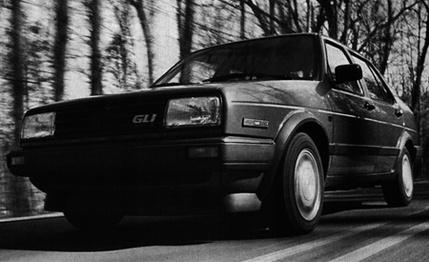
 Archived Short Take Road Test
Archived Short Take Road Test
Volkswagen's Jetta has been around since 1980, and during that time we've been among its most enthusiastic supporters. We last examined a Jetta GLI 16V in 1987. The car is essentially unchanged, and so is our opinion. We liked it then, and we like it now.
Our affection for the car persists despite its increased competition. The stout-engined small-sedan category includes such new entries as the Peugeot 405Mi16 and the Mitsubishi Galant and such perennials as the Honda Accord and the Pontiac Grand Am SE. Why then do we continue to like this car as much as we do?
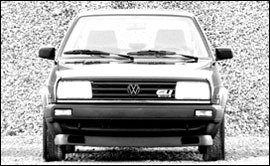

The answer lies in the satisfaction the Jetta GLI 16V offers the driver who likes a little kick from his small sedan and in the car's finely integrated personality. Viewed separately, the Jetta 16V's important components and operating systems are no better than—and on paper are sometimes inferior to—those of its colleagues. Yet, as so often happens with a well-engineered car, the whole Jetta is greater than its individual parts.
Open the door and sit down in the Jetta's Recaro seats and you immediately feel a comforting firmness that cradles you without suffocating softness. The back, sides, and bottom are solidly bolstered. The adjustments are limited to fore-and-aft position, rear height, and seatback angle, yet the seats somehow set you up in a way that whets your appetite for serious cruising. And they are ideal for long-distance drives. The question begs itself, "Why can't all seats be like this seat?"
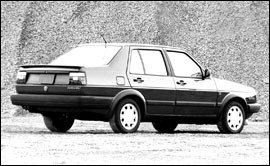

Sweep your eyes across the instrument panel and you're struck by the clear, purposeful design of each dial and needle and by the cleanliness of line that characterizes the entire dash.
Turn the key and the engine zings into action. It's not the quietest engine on the market, but it's a double-overhead-cam four-cylinder and it sends 123 horses to pull you down the high road. Other items that make the Jetta GLI 16V's 1781cc four what it is include a Bosch KE-Jetronic port-fuel-injection system, hydraulic valve lifters, an aluminum cylinder head, a cast-iron block, and—of course—sixteen valves.
The Jetta GLI 16V will go from 0 to 60 mph in 9.3 seconds, and it has a top speed of 119 mph. That 0-to-60 time is four-tenths of a second slower than our 1987 showing, a discrepancy explained in part by our new Jetta being a tad heavier—due primarily to the addition of an anti-lock braking system.
Though the high-revving engine hauls you along quickly enough—it is the same powerplant fitted to the snake-quick GTI 16V—it lets you know that it's hard at work by keeping the decibel level high. The engine sounds seem to be anything but out of place in a sporty small sedan, but we'll admit to feeling relief when we reached fifth gear and settled in at freeway speeds—at which point the engine settles into a quiet, comforting hum.
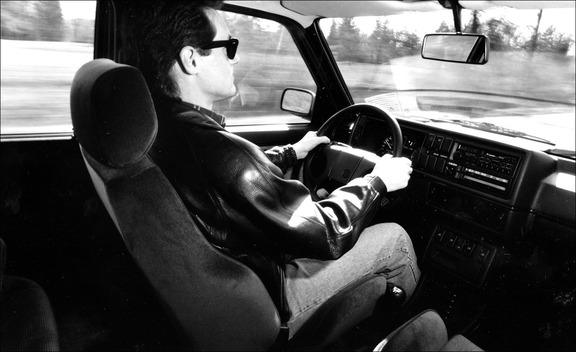

We had the opportunity to take a long drive on the Interstate at night and in a heavy rain. Under such conditions, you are reminded that this car comes from a country where high-speed driving is a rule and not an exception. Despite the foul weather and poor visibility, the Jetta felt stable and we could not have felt more comfortable.
Off the freeway, on curvaceous back roads with indifferent maintenance histories, the Jetta GLI 16V demonstrates still more competence. Here, where handling becomes a critical element of the driving experience, the car's German engineering heritage continues to serve it well. The car remains neutral even under severe cornering stress (it circles the skidpad at 0.80 g), and its apparent desire to go where you point it with a direct eagerness made us feel warm all over. The behavior of the Jetta GLI 16V's various performance components—steering, braking, engine, tires, and fully independent suspension—convince you that they embarked together on the same mission: providing you with an excellent driving experience.
The anti-lock braking system worked flawlessly, giving enough feedback to let us know it was working but then going ahead and doing its job without any untoward shudders or quivers. The stopping distance showed improvement over our last look. We hauled the GLI 16V to a stop from 70 mph in 180 feet, the four power-assisted discs ending the exercise four feet earlier than before.
So, summing up, we have a nicely put together car that goes well, stops well, turns well, and offers a full basket of sensory delights to its driver. It's as much fun on the freeway as it is on the two-lane, and it's an all-around pleasure to occupy—with the one exception of a bit too much engine noise at the top of the power band in each gear.
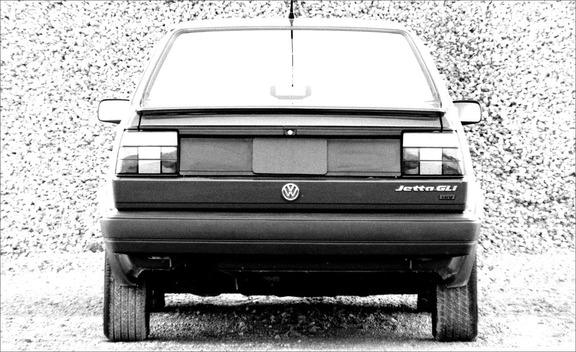

Is there nothing wrong with this car? Not a lot, but the biggest problem is a large one indeed. The Jetta GLI 16V now costs—equipped with anti-lock brakes, air conditioning, cruise control, and a few other add-ons—a thumping $18,800. Take a look at this car and then look at the more modern Nissan Maxima SE—which offers a 160-hp V-6 and costs only another $1500 or so—and you begin to see what the GLI 16V faces in the marketplace: big trouble.
But for the driver who likes the Teutonic approach to small-sedan motoring, maybe $18,800 isn’t too much to pay.